Go language is a relatively new, statically typed programming language. Due to its powerful concurrency performance and concise code style, it has become more and more popular among developers in recent years. When developing in the Go language, it is very necessary to understand various data types. This article will introduce the commonly used data types and their related characteristics in the Go language.
- Boolean type (bool)
The Boolean type is a very simple data type with only two values: true and false. In the Go language, bool can be used to represent logical truth or falsehood. Its main application scenarios are in logical judgment and conditional branching. - Integer type (int, int8, int16, int32, int64, uint, uint8, uint16, uint32, uint64)
Integer type is one of the most widely used data types in the Go language. In Go, integers are divided into signed integers and unsigned integers. The difference lies in the presence of unsigned bits. The lengths of integers are also different, 8, 16, 32, and 64 bits respectively. When performing calculations, you need to pay attention to data overflow issues when converting between integers. - Floating point type (float32, float64)
Floating point data represents a number with a decimal part. In Go, floating point types are divided into float32 and float64, which represent single-precision and double-precision floating point numbers respectively. - String type (string)
The string type refers to a sequence of characters. In the Go language, the string type uses double quotes " " or backticks - Array type (array)
The array type is a fixed-length data type. In Go language, the elements in an array must have the same data type, and the length of the array is specified when creating the array. When using arrays, you need to pay attention to the range of array subscripts. - Slice type (slice)
The slice type is a variable-length array type. In the Go language, slice types can be created dynamically using the make() function, and elements can be quickly added or removed. A slice type can be thought of as a dynamically sized array. - Dictionary type (map)
The dictionary type is an unordered key-value pair type. In the Go language, dictionary types can be defined in the form of map[key]value, where the key and value can use different data types respectively. Dictionary type provides quick search function. - Pointer type (pointer)
Pointer type is a very important data type. Using pointer type in Go language can conveniently operate variables. In Go language, use the "&" symbol to get the address of a variable, and use the "*" symbol to get a pointer to the variable.
The above are commonly used data types in Go language. Understanding the characteristics and usage of these data types can help developers better understand the programming mechanism of the Go language and be more comfortable in actual development.
The above is the detailed content of What are the data types in Go language?. For more information, please follow other related articles on the PHP Chinese website!
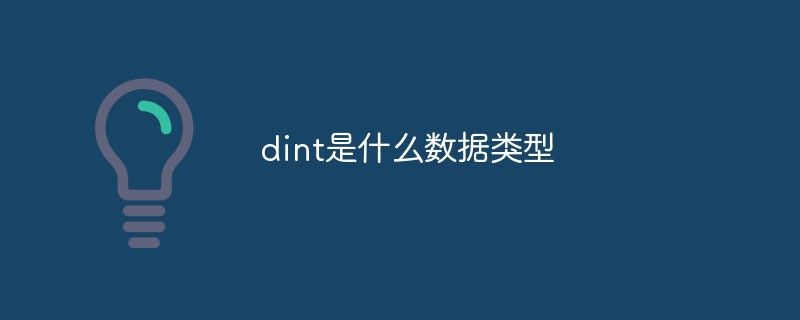 dint是什么数据类型Sep 05, 2022 am 11:05 AM
dint是什么数据类型Sep 05, 2022 am 11:05 AMdint是带符号位的32位整数类型;dint的表示方法及范围是“L#-2147483648~L#+2147483647”,定义为双整数或长整数,字节是电脑里的数据量单位,在计算机中,数据只用0和1这种表现形式。
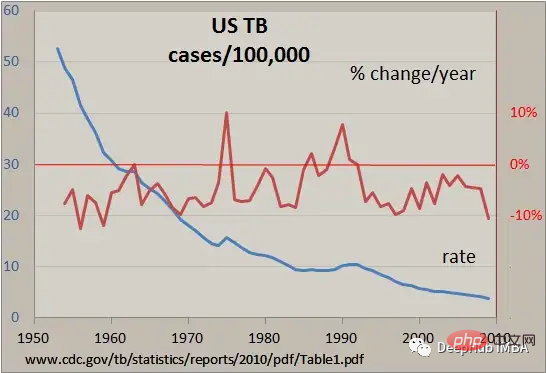 Python时间序列数据操作的常用方法总结Apr 24, 2023 pm 10:22 PM
Python时间序列数据操作的常用方法总结Apr 24, 2023 pm 10:22 PM时间序列数据是一种在一段时间内收集的数据类型,它通常用于金融、经济学和气象学等领域,经常通过分析来了解随着时间的推移的趋势和模式Pandas是Python中一个强大且流行的数据操作库,特别适合处理时间序列数据。它提供了一系列工具和函数可以轻松加载、操作和分析时间序列数据。在本文中,我们介绍时间序列数据的索引和切片、重新采样和滚动窗口计算以及其他有用的常见操作,这些都是使用Pandas操作时间序列数据的关键技术。数据类型Python在Python中,没有专门用于表示日期的内置数据类型。一般情况下都
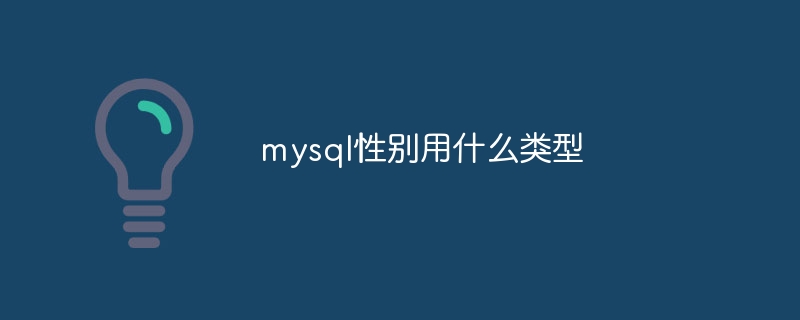 mysql性别用什么类型Jun 13, 2023 am 11:33 AM
mysql性别用什么类型Jun 13, 2023 am 11:33 AMMySQL性别采用多种数据类型来表示性别字段,例如CHAR、ENUM等,最终采用哪种类型,取决于实际需求以及数据存储的大小和性能。
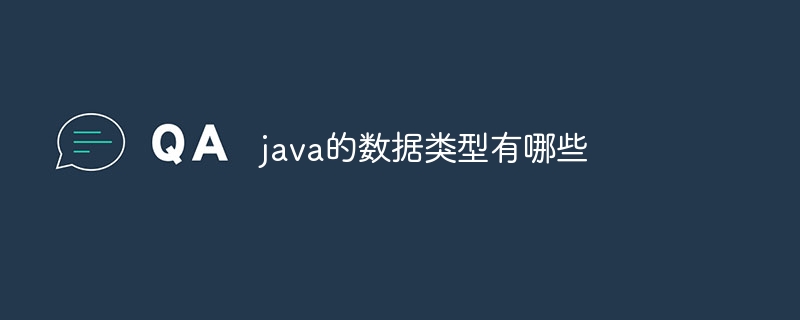 java的数据类型有哪些Jan 30, 2024 pm 03:23 PM
java的数据类型有哪些Jan 30, 2024 pm 03:23 PMjava数据类型:1、整型;2、浮点型;3、字符型;4、布尔型;5、其他数据类型;6、引用类型;7、原始类型与封装类;8、自动装箱与拆箱;9、可变参数;10、注解;11、枚举;12、原始类型和引用类型的选择。Java是一种强类型语言,因此每种数据都有其固定类型。
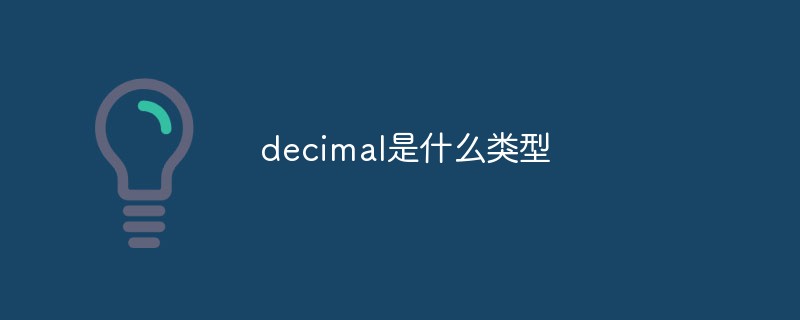 decimal是什么类型Mar 18, 2021 pm 04:03 PM
decimal是什么类型Mar 18, 2021 pm 04:03 PMdecimal是MySQL中存在的精准数据类型,语法格式“DECIMAL(M,D)”。其中,M是数字的最大数(精度),其范围为“1~65”,默认值是10;D是小数点右侧数字的数目(标度),其范围是“0~30”,但不得超过M。
 MySQL数据类型详解:你需要知道的知识点Jun 15, 2023 am 08:56 AM
MySQL数据类型详解:你需要知道的知识点Jun 15, 2023 am 08:56 AMMySQL是世界上最流行的关系型数据库管理系统之一,因其可靠性、高安全性、高扩展性以及相对低的成本而得到了广泛应用。MySQL的数据类型定义了各种数据类型的存储方式,是MySQL的重要组成部分。本文将详解MySQL的数据类型,以及在实际应用中需要注意的一些知识点。一、MySQL的数据类型分类MySQL的数据类型可以分为以下几类:整数类型:包括TINYINT、
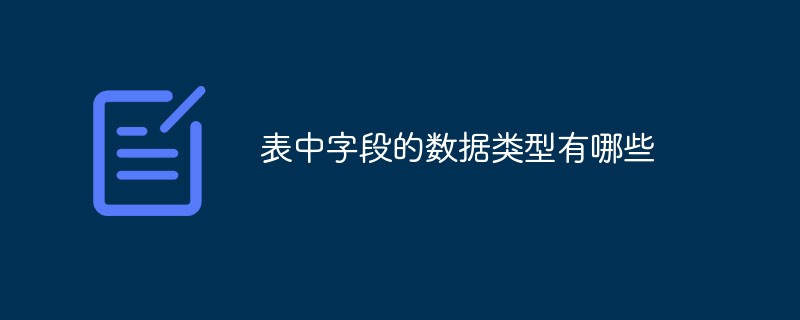 表中字段的数据类型有哪些Jan 19, 2021 am 10:18 AM
表中字段的数据类型有哪些Jan 19, 2021 am 10:18 AM表中字段的数据类型有:1、二进制类型,包括Binary、Varbinary、Image;2、字符串类型,包括CHAR、VARCHAR、TEXT等;3、Unicode数据类型,包括Nchar,Nvarchar和Ntext;4、日期和时间数据类型,包括DATE、TIME、YEAR等;5、数值数据类型,包括INT、FLOAT、BIGINT等;6、货币数据类型;7、特殊数据类型等等。
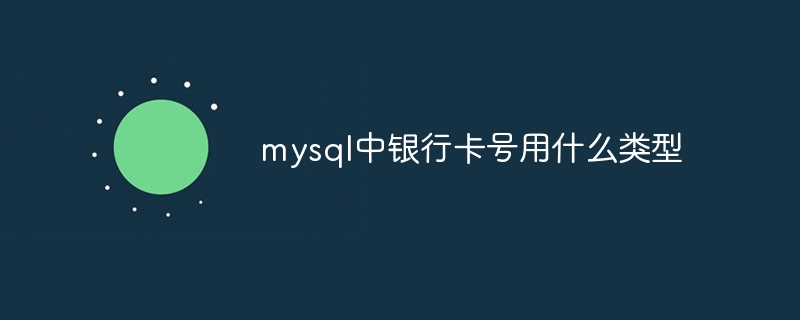 mysql中银行卡号用什么类型Jun 14, 2023 pm 04:34 PM
mysql中银行卡号用什么类型Jun 14, 2023 pm 04:34 PMmysql中银行卡号用“varchar”字符串类型,因为银行卡的号码较长并且全是数字,为了方便存储,就统一存储为字符串类型。如果用“number”类型,会超出“int”类型的最大值范围,必须用“bigInteger”存储,而它不利于数据的正常转换。


Hot AI Tools

Undresser.AI Undress
AI-powered app for creating realistic nude photos

AI Clothes Remover
Online AI tool for removing clothes from photos.

Undress AI Tool
Undress images for free

Clothoff.io
AI clothes remover

AI Hentai Generator
Generate AI Hentai for free.

Hot Article

Hot Tools

mPDF
mPDF is a PHP library that can generate PDF files from UTF-8 encoded HTML. The original author, Ian Back, wrote mPDF to output PDF files "on the fly" from his website and handle different languages. It is slower than original scripts like HTML2FPDF and produces larger files when using Unicode fonts, but supports CSS styles etc. and has a lot of enhancements. Supports almost all languages, including RTL (Arabic and Hebrew) and CJK (Chinese, Japanese and Korean). Supports nested block-level elements (such as P, DIV),

MantisBT
Mantis is an easy-to-deploy web-based defect tracking tool designed to aid in product defect tracking. It requires PHP, MySQL and a web server. Check out our demo and hosting services.

SAP NetWeaver Server Adapter for Eclipse
Integrate Eclipse with SAP NetWeaver application server.

Atom editor mac version download
The most popular open source editor

MinGW - Minimalist GNU for Windows
This project is in the process of being migrated to osdn.net/projects/mingw, you can continue to follow us there. MinGW: A native Windows port of the GNU Compiler Collection (GCC), freely distributable import libraries and header files for building native Windows applications; includes extensions to the MSVC runtime to support C99 functionality. All MinGW software can run on 64-bit Windows platforms.






